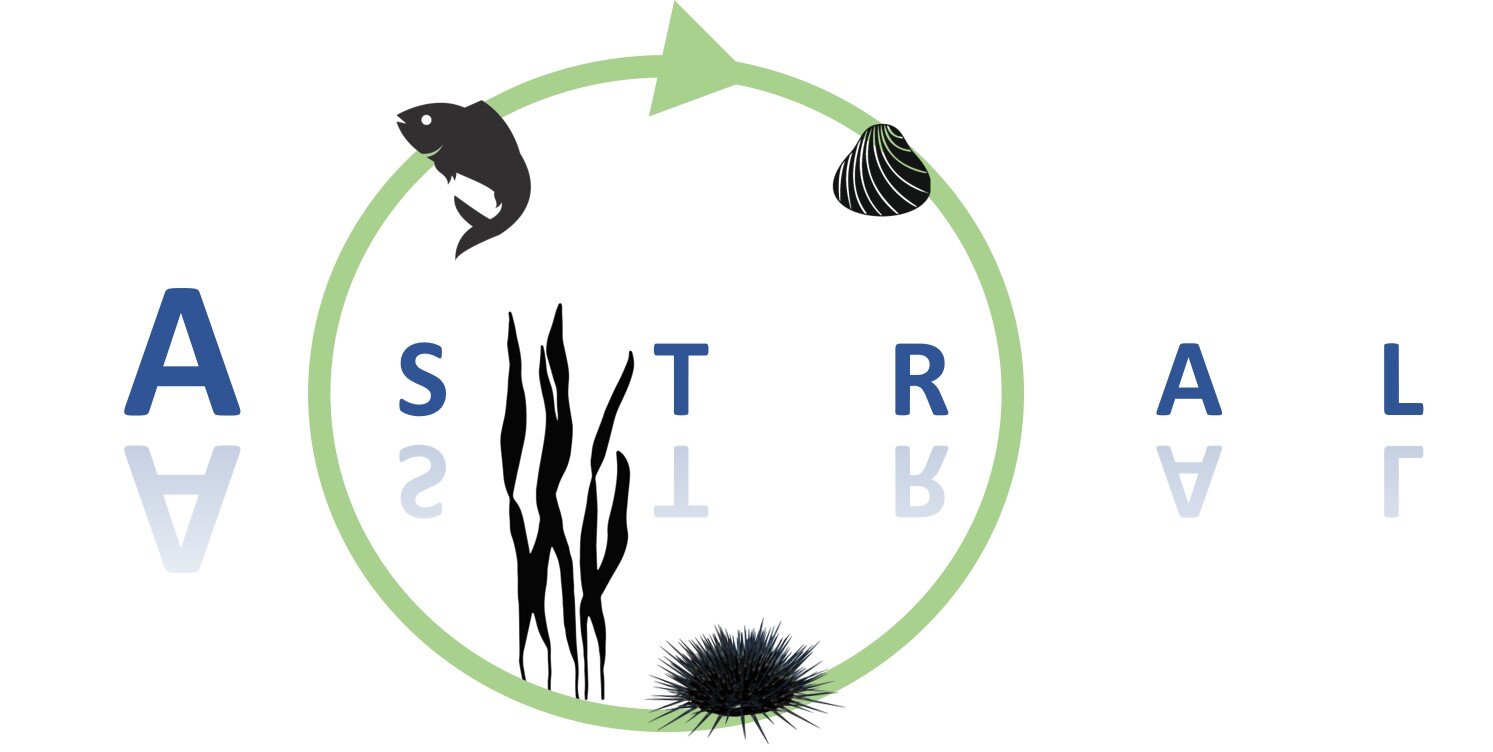IMTA Lab – Brazil
Federal University of Rio Grande
Contact:
Prof. Dr. Luis Poersch - Lpoersch@gmail.com
Location:
Rio Grande do Sul State, Southern Brazil





ASTRAL production value chain for the IMTA-LAB Brazil close system:
Fed species
Marine white shrimp, Litopenaeus vannamei
Release nutrients and organic material (Biofloc) into the recirculation system.
Extractive species
Native oyster, Crassostrea gasar
Tilapia, Oreochromis niloticus
Are filter feeders filtering out Biofloc as food, reusing the organic material in the production system.
Seaweed – sea lettuce, Ulva fasciata
Marine asparagus, Salicornia neii
Absorb dissolved nutrients - reusing the nitrate and phosphate accumulated in the production system.
Novel species
Native oyster, Crassostrea gasar
Is responsible to control the biofloc concentration in the IMTA system.



Main research questions
Determine the biomass relation between species
Reduce the Feed Conversion Rate (FCR) in the system
Increase the biomass production of each of the high-value livestock species while providing the opportunity for the biofloc community to expand to support the additional capacity.
Identify the flow rates and other management protocols that accomplish the other objectives;
Development of a simple parameterized economic model of the costs involved in the production of all four livestock species, to include amortized capital expenses, livestock procurement, feed, electricity, labour (routine, non-research labour), chemical supplementation (e.g., NaHCO3, CaCl2, MgSO4), waste disposal, and estimation of heating costs for winter runs.
Replicate the production technology to producers (courses)


